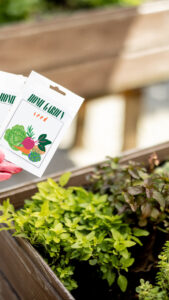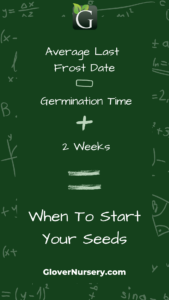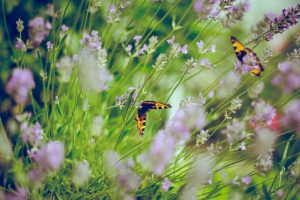Hello fellow gardeners! It’s hard to think of spring when we’re surrounded by so much SNOW! But here we are, reminding you that no matter how much snow is on the ground it will melt away come spring. And when that happens, one of the most important steps in getting our gardens ready is starting our seeds. After all, the growing season is right around the corner!
There are a few things to consider when starting your seeds, including:
- What type of seed you want to plant
- When to start planting your seeds
- How to care for your seedlings
In this blog post, we’ll explore all of these topics. You’ll be prepared to start your seeds and have a successful growing season!
What Type of Seeds to Plant
First, let’s talk about how to pick seeds for your garden.
When selecting seeds for your garden, it is important to consider what type of climate you live in. If you live in an area with a short growing season, as we do here in Utah, you will want to choose plants that can be started indoors and then transplanted outdoors. Some examples of plants that can be started indoors and then transplanted outdoors include tomatoes, peppers, eggplants, and herbs.
If you live in an area with a long growing season, you can start your seeds outdoors. Some examples of plants that can be started outdoors include squash, cucumbers, watermelons, and pumpkins.
It is also important to consider the amount of space you have available. If you have a small space, you can choose plants that thrive in containers or raised beds. Some examples include tomatoes, peppers, eggplants, herbs, and lettuce.
If you have a large space, you can grow just about any type of plant. However, it is still important to consider the amount of sunlight and water that your plants need.
Once you have considered these factors, you can choose the specific varieties of plants that you would like to grow. To find out more about specific plant varieties, consult a gardening book, online gardening resource or one of our experts here at Glover Nursery.
When to Start Your Seeds
Next, we move on to the all-important question of when to start your seedlings. Here at Glover Nursery, we recommend taking the last average frost date and counting backward as to how long that seed would need to germinate.
 According to the Farmer’s Almanac, the average last frost date in West Jordan Utah is April 25. So, to get a good start ready for transferring outdoors we have an easy equation to help you. We recommend looking at how long something takes to germinate and adding a couple of weeks of growth onto that before transplanting it into the garden.
According to the Farmer’s Almanac, the average last frost date in West Jordan Utah is April 25. So, to get a good start ready for transferring outdoors we have an easy equation to help you. We recommend looking at how long something takes to germinate and adding a couple of weeks of growth onto that before transplanting it into the garden.
Here’s a quick equation.
(Average Last Frost Date – Germination Time) + 2 Weeks = When to Start Your Seeds
Now that you know what to plant and when to plant it, you may be interested in learning how best to take care of your lil baby starts.
How to Start Your Seeds
There are a few key things to keep in mind when caring for your seedlings. The first is to make sure that they have enough light. Seedlings need a minimum of six hours of direct sunlight per day. If you do not have a place in your home that gets six hours of direct sunlight, you can use grow lights.
The second key thing to keep in mind when caring for your seedlings is to make sure that they have enough water. Seedlings should be watered daily, making sure to keep the soil moist but not soggy.
Finally, the third thing to remember when caring for your seedlings is to fertilize them regularly. Seedlings should be fertilized every two weeks with a balanced fertilizer.
If you’re growing seeds for an herb garden we suggest you check out our blog post here. Herb gardens flourish with these specific guidelines.
By following these simple tips, you can ensure that your seedlings have a happy and healthy start to the growing season!
The seeds have arrived at Glover Nursery and we can hardly stand all the promise that the rows and rows of seed packets are giving off here.
If you’re overwhelmed or looking to try something new this year we encourage you to stop by and chat with our knowledgeable staff. We love pointing out our favorite seeds for our local climate here in the Salt Lake City Valley. We may even have one or two surprises for the seasoned gardener.
Seedlings need a lot of care, but if you follow these simple tips you can ensure a happy and healthy start to the growing season!

